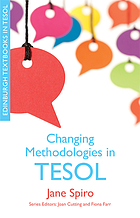
Get your research questions answered through chat, email, phone, drop in at the Information desk or make an appointment.
Reference sources are a great way to start your research. They will help you define key terms, identify important themes and individuals in the field, and find keywords for further searching in catalogs and databases. Reference sources also include bibliographies that will help you identify important primary and secondary works in your subject area. Select one of the reference source types below to get started.
Two recommended places to start your research are Gale Virtual Reference and Credo (see the "Credo, Gale, & Online Encyclopedias" tab).
References sources of UMCP can be either in print or electronic. In the area of education, the print Reference Stacks are usually located on the first floor of McKeldin Library; unless the catalog record gives a different location.
UMCP Online Resource is available to UMCP faculty, staff and students only.
Two recommended places to start your research are Gale Virtual Reference and Credo (search below). Additional online encyclopedias are listed below to help you continue your research.

Credo is an easy-to-use tool for starting research. Use this box to search hundreds of full-text reference titles, as well as 500,000+ images and audio files and over 1,000 videos. It may take a moment to load the results of your search.
Click the button above to visit UMD's portal to the Gale Virtual Reference Library. Once you're there, click the Name link (highlighted in yellow), and then log in with your school ID to access the whole Gale collection.

Below is a selection of general reference sources. If the title is blue, you can click on the link to view the item online. Some items require a UMD Directory ID to access. Otherwise, go to the holding library to use a paper copy.
 Changing Methodologies in TESOL
by
Jane Spiro
Covering core topics from vocabulary and grammar to teaching, writing speaking and listening, this textbook shows you how to link research to practice in TESOL methodology. It emphasises how current understandings have impacted on the language classroom worldwide and investigates the meaning of 'methods' and 'methodology' and the importance of these for the teacher: as well as the underlying assumptions and beliefs teachers bring to bear in their practice. By introducing you to language teaching approaches, you will explore the way these are influenced by developments in our understanding of language, learning technologies, learners, and their socio-cultural world. Three main areas in TESOL methods are covered: the impact of learner needs, context and culture on language, learning and teaching approaches; knowledge of language and its impact on methods, from the word to whole texts; and multiple literacies and competences for the modern world, including academic literacy and web literacy, socio-cultural and intercultural competence. The impact on teacher choices and methods of World Englishes, approaches to grammar, and learner development is also discussed. Each chapter illustrates core principles in practice using case studies of English teaching worldwide. Guided tasks, including article critique, case study analysis, and small-scale classroom research, prepare you to engage critically with research literature and use this analysis to inform your own practice. Key features* Written specifically for those studying TESOL teaching* First book to teach methods and practice in a global context, including links to the latest developments in the field* Encourages students to adopt a reflective approach to their teaching* Concepts and research are presented in an accessible way, regardless of the student's level of teaching experience or linguistic study* Provides task-based activities.
Changing Methodologies in TESOL
by
Jane Spiro
Covering core topics from vocabulary and grammar to teaching, writing speaking and listening, this textbook shows you how to link research to practice in TESOL methodology. It emphasises how current understandings have impacted on the language classroom worldwide and investigates the meaning of 'methods' and 'methodology' and the importance of these for the teacher: as well as the underlying assumptions and beliefs teachers bring to bear in their practice. By introducing you to language teaching approaches, you will explore the way these are influenced by developments in our understanding of language, learning technologies, learners, and their socio-cultural world. Three main areas in TESOL methods are covered: the impact of learner needs, context and culture on language, learning and teaching approaches; knowledge of language and its impact on methods, from the word to whole texts; and multiple literacies and competences for the modern world, including academic literacy and web literacy, socio-cultural and intercultural competence. The impact on teacher choices and methods of World Englishes, approaches to grammar, and learner development is also discussed. Each chapter illustrates core principles in practice using case studies of English teaching worldwide. Guided tasks, including article critique, case study analysis, and small-scale classroom research, prepare you to engage critically with research literature and use this analysis to inform your own practice. Key features* Written specifically for those studying TESOL teaching* First book to teach methods and practice in a global context, including links to the latest developments in the field* Encourages students to adopt a reflective approach to their teaching* Concepts and research are presented in an accessible way, regardless of the student's level of teaching experience or linguistic study* Provides task-based activities.
 Materials Development for TESOL
by
Freda Mishan and Ivor Timmis
Materials Development for TESOL
by
Freda Mishan and Ivor Timmis
